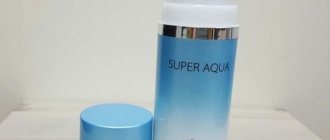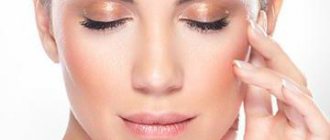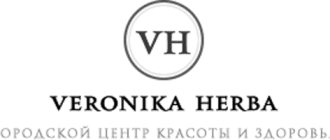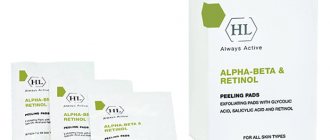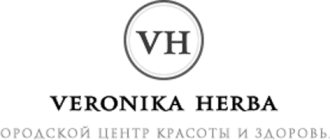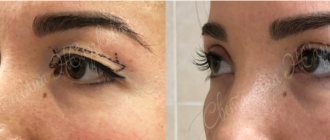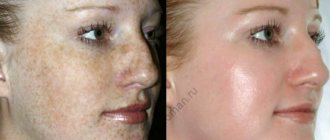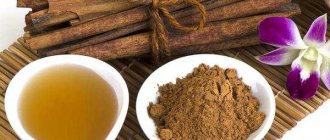Chemical facial cleansing is one of the most popular types of such cosmetic procedures. It is highly valued for its ability to prevent acne even in the problematic adolescence, which is accompanied by hormonal changes.
The manipulation copes well with the first signs of aging, and also removes traces of inflammation. The measure even works in the long term, reducing the areas affected by skin imperfections, eliminating them almost completely over time.
Various recipes are aimed at deep cleansing contaminated skin. So that every patient can leave the beauty salon completely satisfied, doctors have developed several types of such chemical intervention. They are tailored to the needs of people of different ages and skin types. According to reviews, the first result can be seen immediately after completion of the procedure. The visual changes will please even those who have not previously sought professional cosmetology help.
The effect of acid peeling on the skin
With age, the skin loses its former elasticity and youth. To avoid this process, cosmetologists recommend monitoring the condition of the skin on your face from the age of 25 - the earlier you start taking care of yourself, the longer your facial skin will look fresh. Facial peeling has a number of positive aspects, we will talk about them now.
Acid peeling for the face is suitable for absolutely everyone, regardless of skin type. What is its main action?
- Fights excessive skin pigmentation;
- Helps cleanse pores and tighten them;
- Removes the stratum corneum of the skin;
- Prevents the appearance of early wrinkles;
- Stimulates skin cell regeneration;
- Improves blood supply and microcirculation.
Acid peeling can be done for the face, hands and feet - it perfectly fights the first signs of aging, helps smooth the skin, even out the color, and fights dryness. The effect of peeling on the skin also depends on its type.
What does lemons have to do with it?
Citric acid is a natural preservative and antioxidant that is widely used in the food industry. On the labels of juices, jams, sweets and cakes you can find it under the code E330.
The citric acid sold in stores is food grade and has been thoroughly purified. It is a white crystalline powder without a pungent odor. For industrial purposes, technical citric acid is used: in its basic properties it does not differ from food grade, but undergoes less intensive purification. For example, it is added to concrete and gypsum mixtures to slow down their hardening.
Initially, the acid was obtained from the juice of unripe lemons, because it is in citrus fruits that its concentration is highest - up to 9%. For example, 100 g of lemon contains approximately 5.5 g of acid, and 100 g of lime contains 7 g of acid. Hence the name. In addition to lemons, acid is found in black currants and gooseberries, pineapples, strawberries and apples.
It is very beneficial for the body: strengthens the walls of blood vessels, regulates glucose levels, improves digestion, supports the immune system, has a beneficial effect on the condition of the skin and hair, improves energy exchange and metabolism.
Types of acid peeling
Depending on the active ingredients and the method of exposure to the skin, there are several types of acid peels.
Types of peeling by composition
These include two types:
- Fruit peeling is a peeling based on fruit acids, it can be performed both in the salon and at home;
- Glycolic peeling – it contains glycolic acid and is used only in salons.
Peeling with fruit acids has a lot of positive reviews on forums, it is quite gentle, and the skin quickly recovers after fruit peeling.
Peeling based on glycolic acid can be both superficial and deep - it depends on the percentage of acidity. Thus, glycolic acid 10–20% is used for the upper layers of the skin. An indicator of 25 - 35 - 50% indicates that peeling can already affect the middle layers of the skin, and glycolic acid with a percentage above 65 - 70 already indicates a deeper effect on the skin. Of course, it is better to entrust the use of such tools to professionals.
Types of peeling by method of application
Depending on the method of applying acid to the face, there are two types of acid peeling:
- Physical peeling – a scrub containing acid is applied to the facial skin;
- Chemical peeling - a solution containing an acid of a certain concentration is applied to the facial skin; the procedure can be performed no more than once every six months.
Types of peelings according to the method of impact on the dermis
Here we can talk about the following types:
- Superficial acid peeling is the safest and non-traumatic, it affects only the upper layer of the epidermis, and can be done at home;
- Medium acid peeling - acts not only on the surface of the skin, but also on the middle layer of the epidermis, requires aftercare;
- Deep acid peeling is performed only by professional cosmetologists; the procedure is painful and requires anesthesia.
It should be noted that the choice of the type of acid peel depends on the degree of problem of the koi. You should not do deep peeling right away unless there is a medical indication for it. For young girls, superficial peeling with fruit acids is more suitable; for older women, medium or deep peeling is more suitable. The latter is good at removing scars and scars on the face. In any case, a preliminary consultation with a cosmetologist is required.
Types of peeling according to the amount of acids
According to the amount of acids in the composition, acid peeling is divided into:
- One-component – the peeling contains one active acid;
- Multicomponent – peeling contains two or more types of active acids.
It should also be mentioned that there are many types of acids, each of which has its own direction of action.
cosmetic procedure for skin cleansing
Rehabilitation progress
Since each type of chemical exposure has its own rehabilitation period, which also varies significantly due to the characteristics of the patient’s skin, no one can name the exact recovery time.
The easiest way for healing to occur is by superficial cleansing of the dermis, which will take approximately three days. But recovery with the average technique can take almost a month.
To consolidate the results obtained, as well as to avoid possible complications such as a not very pleasant appearance in the first days, experts recommend adhering to medical recommendations. The cosmetologist will definitely recommend a suitable moisturizing or nourishing cream that can sufficiently saturate the damaged dermis with useful substances and moisture.
An excellent solution to the problem is to use thermal water. If you use it on a regular basis, you will be able to avoid swelling and provide sufficient hydration.
It is also worth refusing to independently remove manifestations of skin peeling, waiting for the natural completion of the process. You'll have to put off going to the solarium and tanning under the sun's rays. You will need to avoid saunas, baths and other rooms where an atmosphere of high humidity and high air temperature is maintained.
Types of acids used for facial peeling
Let's say a few words about which acids contribute to better cleansing of the skin.
Pyruvic acid
Increases facial skin density, elasticity and firmness. The skin becomes more toned, smoother, the water balance is restored - the acid replenishes the missing moisture.
Lactic acid
Lactic acid is one of the most commonly used acids in facial peeling; it has an excellent exfoliating effect, is hypoallergenic, suitable for use at any time of the year, and does not cause irritation.
Glycolic acid
This type of acid is often used for oily and problem skin; it softens the sebaceous glands well, opens pores, and has a gentle effect on the skin. It is especially effective in combination with chitosan, an active substance with a moisturizing effect.
Salicylic acid
This acid is suitable for cleansing problematic facial skin - its use helps get rid of acne, post-acne, and reduce sebum production. Salicylic acid dries out the skin, so it is good to apply cream after peeling.
Acetylsalicylic acid
This product copes well with skin inflammation, acne, and is suitable for excessive shine on the face. Acetylsalicylic acid is a neutralizer for infections under the skin, just like salicylic acid is suitable for home use.
Hyaluronic acid
Hyaluronic acid is one of the components of the epidermis, which is why acid peeling based on it turns out to be the most effective. Hyaluronic peeling improves cellular metabolism, skin regeneration, and prevents the appearance of wrinkles on the face and premature aging. You can apply hyaluronic acid to your face daily, or use a cream that contains it.
Seven ways to use citric acid in cooking
1. For preserving vegetables.
Citric acid is added at the very end, before pouring the marinade into the jar. For 1 liter usually add ¼ teaspoon. Compared to vinegar, citric acid gives the marinade a milder taste.
2. For preparing compotes.
The antiseptic properties of citric acid help prevent fermentation. It is added along with sugar during cooking or into a jar of ready-made compote before closing.
3. Marinade for meat.
Add ¼ teaspoon per kilogram of meat when marinating shish kebab, and the beef or lamb will become soft, and the finished dish will have a pleasant flavor.
4. Homemade mayonnaise.
Citric acid is an excellent substitute for vinegar when making mayonnaise and other homemade sauces. It is usually added at the rate of 1 gram per 1 liter.
5. For baking.
Buns and biscuits will become fluffier and have a pleasant citrus flavor.
6. For desserts.
Citric acid is added to glaze or cream to add sourness and eliminate cloying.
7. Seasoning for borscht.
A pinch of citric acid will help the borscht retain its bright, rich color, acidify it, and at the same time not add an unnecessary smell, as vinegar can do.
Do not forget to be careful: this is indeed an acid, which, if in too high a concentration in dry or diluted form, can cause a burn to the mucous membrane.
#BANNER#
Indications and contraindications for acid peeling.
Acid peeling, like many other cosmetic procedures, is aimed at improving the overall condition of the skin. There are a number of indications for cleansing the face with acids.
Indications for acid facial peeling
This procedure is effective in the following situations:
- Lost or reduced skin elasticity;
- Exfoliating the skin and removing dead cells;
- Facial skin rejuvenation;
- Smoothing out wrinkles, giving relief to the face;
- Fighting inflammation, age spots on the face;
- Elimination of scars, scars and other skin irregularities.
Acid peeling has a certain list of contraindications.
Contraindications for acid facial peeling
Is it possible to do peeling during pregnancy and breastfeeding? Unfortunately, experts strongly do not recommend resorting to this procedure during this period. The following factors also include contraindications:
- Illness, even a common cold;
- Increased allergies;
- Any neoplasms on the skin;
- Cuperosis and other skin diseases;
- Recent chemotherapy;
- Herpes.
Of course, like any procedure, acid peeling has its pros and cons. An undoubted advantage is that the skin after acid peeling is noticeably transformed, the complexion is evened out, wrinkles and greasy shine go away. However, do not forget that any procedure is associated with a certain degree of skin damage. That is why it is best to use acid peeling in the cold season, when the effect of ultraviolet rays is not as aggressive as in summer. A cosmetologist will tell you how many times and how often to do it.
can be done in a salon or with care at home helps lighten pigmentation, remove dead skin, cleanse and tighten pores, protects against wrinkles, improves regeneration
When to give up
Acid peeling is a complex procedure. Therefore, before carrying out it, you should familiarize yourself with the contraindications. The procedure is prohibited:
- in case of individual intolerance to any of the components of the composition;
- for allergies;
- with acute herpes;
- in the presence of keloid scars;
- during lactation and pregnancy.
Acid peeling should only be performed from November to March. In warm weather, such a procedure can cause the development of irreversible processes in the layers of the skin. Therefore, during active sun exposure, peeling using acidic compounds is strictly prohibited.
Facial cleansing with acid peeling at home
Below you will learn how to do acid peeling at home. When carrying out this procedure, both purchased professional products and those prepared independently are suitable. Let's focus on peelings from famous brands.
Acid peeling with professional products
Today, the professional cosmetics market offers a huge range of acid-based products. We have tried to compile for you a list of the most popular and, judging by reviews, effective acid peels:
- ALPHA COMPLEX Rapid Exfoliator from Holy Land is an Israeli product based on fruit acids;
- Glycolic peeling 50% ph 2.5 Professional Face Care series from Bielita produced in Belarus;
- Acid peeling for feet My Nail Callus Remover, manufacturer - USA, good for pedicure;
- Natura Siberica Gentle facial peeling, manufacturer – Russia, completely natural composition, soft and gentle effect on facial skin;
- Combined facial peeling Skin Laboratory BHA+, country - Japan;
- Chemical peeling with AHA acids EXPERT Series Faberlic, Russia;
- Avon Clearskin Professional peeling gel for facial skin cleansing, country of origin: USA;
- Mizon peeling serum with fruit acids AHA 8% Peeling Serum, Korea;
- Collistar peeling with fruit acids, country - Italy;
- Skin peeling Devita, High Performance Glycolic Acid Blend brand iHerb, USA;
- Peeling and regeneration of facial skin Gemene, Latvia;
- Skinlite Deep Cleansing Peeling Gel with Fruit Acids, Korea;
- Gel peeling Medical Collagene 3D Easy Peel glycolic peeling 10% (aka glycolic peeling with chitosan 10), manufacturer: Medical Collagene;
- Multi-acid peeling Alpika with succinic acid 40%, country - Russia;
- Facial peeling All inclusive Delicate peeling, Russia, ACCORT LLC;
- Glucono-amber peeling “ARCADIA”, Russia;
We have presented the most complete list of products that are in demand among women of different ages. But in addition to professional peelings, there are preparations that can be bought at the pharmacy. The price-quality ratio of these products is at the proper level.
Acid peeling using pharmaceutical products
The following pharmacy peels are available without a prescription, the price ranges from 150 to 1500 rubles:
- Peeling Stopproblem Salicylic enzyme, Russia;
- Vichy mineral peeling mask “Double Radiance”, France;
- Facial exfoliant Bark Cream-mask with fruit acids, Russia;
- Facial peeling ISIS Pharma Glyco-A, Switzerland;
- Jessner peeling, USA;
- Facial peeling BeautyMed Chemical peeling with salicylic acid and fruit acids, France.
For girls under 25 years old, Jessner peeling is suitable. The rest of the peelings listed are more applicable to adult girls and women. No less effective results can be achieved using home remedies.
Homemade acid peeling recipes for the face
Below we will present you the most effective acid peeling recipes.
Acid peeling for oily and problem skin types
To prepare it you will need the following components:
- Baby soap – 2 tsp;
- Hydroperit – 2 tablets;
- Hydrogen peroxide – 20 ml;
- Camphor alcohol – 20 ml;
- Glycerin – 20 ml;
- Ammonia – 15 g;
- Boric acid – 15 g.
This “classic” peeling recipe came to us from our grandmothers. Mix all ingredients, add grated soap at the end. The composition of the mixture should resemble a cream; apply it to the face and wait until it dries completely. The advantage is that this peeling cream can be stored in the refrigerator for up to 3 months.
Peeling for acne-prone skin
We need:
- Soda – 1 tbsp;
- Salt – 1 tbsp;
- Face cream -1 tbsp.
Mix everything, apply to face for 15 - 20 minutes and rinse with plain water. A burning sensation may occur - in this case, you should wash off the mask earlier to avoid getting burned.
Acid peeling for sensitive skin
The following components are required:
- Aspirin – 3 tablets;
- Yogurt or kefir – 1 tbsp;
- Honey – 1 tbsp.
Crush the tablets to a powder, add to kefir or yogurt, then add honey and let stand for 5 minutes, then apply to the face. After 10 minutes, wash off.
Home peeling affects exclusively the upper layers of the epidermis. Deeper effects can be achieved through salon procedures. In the salon they will take before and after photos for you - deep acid peeling is so effective that the difference will be obvious.
To prolong your youth, you can use salon procedures, ready-made peelings or prepared yourself. The choice is always yours. However, what is always more important is how to care for your face after peeling - and here the key role is not played by cosmetic products. The key to beautiful facial skin is proper nutrition and a healthy lifestyle. Do not neglect these recommendations, and then a visit to a cosmetologist will be purely preventive.
Preparation before the procedure
If you are going to see a specialist for a medium/deep peel or are planning to start a cleansing course at home, you should start preparing your skin in advance.
The preparation stage is very important and consists of daily use of acid products.
You need to start preparing the skin 1-2 weeks, or better yet, a month before the procedure, so that the skin gets used to the action of acids.
Due to improper preparation or lack of it, chemical peeling may not be carried out deeply enough or, on the contrary, it will be too painful and deep.
Holy Land pre-peeling solution
- You can use cosmetics with a low acid content (from 6 to 12%) and a high pH level - soft pre-peelings, cleansers, creams, serums.
- For BHA acids, the minimum effective indicators are 1-2% with pH = 3-4; for heavily contaminated skin with a large number of comedones, the indicators are up to 5% at a lower pH.
- For AHA acids this is from 5 to 8 - 9% with a pH of 3-4.

